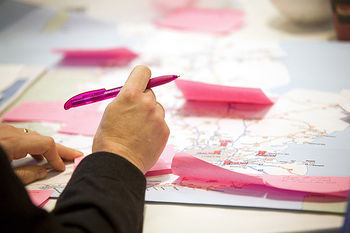Definitions
| Scenario planning for educators | |
|---|---|
| Introduction to scenario planning | Introduction and objectives | Video signpost - Interview with Niki Davis | Definitions | A brief history | e-Learning activity - Discovering scenarios | Anatomy of a scenario | e-Learning activity - Components of a scenario and reflection | FAQs |
The concept scenario originates from the dramatic and literary arts referring to the story line of a play. Scenario planning is one of a family of foresight processes which capture the dynamic of change by placing today's reality within the context of tomorrows' possibilities. (Day: 2001[1]).
Before we review selected definitions, visit the following resources as a brief orientation to get started:
|
We will consider a few definitions to get a feel for what scenario planning is and how it is situated as a creative methodology for strategic planning.
| Consider the following definitions:
Scenario
Strategic planning
|
Reflection on definitions
Microblog activity
Share your thoughts on twitter or WEnotes and remember to include the "#SP4Ed" For example:
Note: If you want to say more than the 140 character limit of a microblog post, feel free to use the open forum or your personal course blog (Remember to label or tag your post with "SP4Ed"). |
Notes
- ↑ Day, R.S., Executive Director: Information and Communications Technology, Unisa 2001. Electronic correspondence 30 July.
- ↑ The Free Dictionary. 2013. Scenario
- ↑ Oxford Dictionaries. 2013. Scenario
- ↑ Joint Research Center, European Commission. 2005. Scenario Definition. FOR-LEARN Online Foresight Guide.
- ↑ Martinelli, F. 2001. Strategic planning Center for Community and Economic Development (CCED), University of Wisconsin Extension.
- ↑ InverstorWords.com. 2013. Strategic planning
- ↑ Businessdictionary.com. 2013. Scenario planning
- ↑ University of Technology Sydney. 2009. Scenario Planning: Case Study 4.
- ↑ Chermack, T. J., & S.A. Lynham. 2002. Definitions and Outcome Variables of Scenario Planning. Human Resource Development Review 1(3): 366-383.
